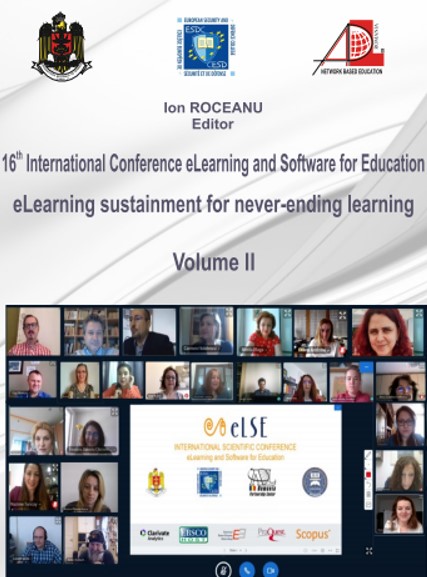USAGE OF ARTIFICIAL INTELLIGENCE IN QUALITY IMPROVEMENT OF EDUCATIONAL PROGRAMS
USAGE OF ARTIFICIAL INTELLIGENCE IN QUALITY IMPROVEMENT OF EDUCATIONAL PROGRAMS
Author(s): Oleg SEREBRENNIKOV, Andrey A. Ponomarev, Andrey PROLETARSKIY, Gleb GUGLYASubject(s): ICT Information and Communications Technologies, Distance learning / e-learning, Pedagogy
Published by: Carol I National Defence University Publishing House
Keywords: Software; sight recognition; exposition, analysis; education - artificial intelligence; video processing;
Summary/Abstract: In the field of education, we are faced with a wide range of absorbability degrees of educational materials in various educational programs and courses. We assume that part of this problem is the style of delivery of information in the associated training materials. The described software product is designed to assess the complexity of the material based on the analysis of various criteria received from the subject during the study of the material. Taking into account the research in psychology, we can conclude that such criteria as the direction of the gaze and the length of time of attention on certain elements of the exposition (text, images, interface elements), by the subject (student), tells us about the importance of these expositions and their elements, as well as the characteristics specifically for the subject. In particular, such matters as interest in new information, the necessity of additional information related to the main theme of the exhibition, complexity of understanding or absorption of complex data (schemes, graphs, interfaces) can be considered. To study such parameters as the direction and length of the view, a firmware and software complex is used, which is based on the following technologies: digital video processing, computer vision for processing video information in the required formats, neural networks for identifying areas where the subject's face and eyes are located, and a software subsystem for performing the necessary calculations. Binding the exposition contexts and data on the current parameters of the subject's sight, this firmware and software complex is able to add special metrics to the exposition and its elements. For example, in addition to the exposition consisting of text and graphs, we also add metrics of interest, importance of this information, complexity of understanding. For general exposure research average values of metrics unique for each subject are used. This allows us to evaluate not the subjective attitude to the exposition, but the parameters of the quality of the exposition itself (digestibility of the material, complexity, thematic comprehensiveness). In the field of education, based on the obtained metrics, training courses, teaching methods and testing methods can be analysed. Having this analysis, we can be more objective about the quality of the material and training programs, as well as to find and designate their most problematic areas for further improvement processing.
Journal: Conference proceedings of »eLearning and Software for Education« (eLSE)
- Issue Year: 16/2020
- Issue No: 02
- Page Range: 476-482
- Page Count: 7
- Language: English

